Celebrations in Korean Art during the Joseon Dynasty at the Asian Art Museum, San Francisco
The Asian Art Museum, San Francisco, will present In Grand Style: Celebrations in Korean Art during the Joseon Dynasty, on view 25 October 2013 – 12 January 2014. It is the first major U.S. exhibition to explore the colourfully choreographed ceremonies of Korea’s Joseon dynasty (1392-1910).
The exhibition features more than 110 objects that illustrate for are intended for festive events such as birthdays, weddings and political appointments, which were celebrated with elaborate rites that sometimes involved thousands of participants and continued for days. Dance, music, cuisine and procession all had parts in the festivities, while rules were prescribed that governed practically every detail of the celebrations.
The careful, detailed organisation of extensive events during the dynasty sprang from the country’s national ideology of Confucianism, which considered ritual and order the foundations of a stable, peaceful civilization. Many of these celebrations were recorded in comprehensive detail through writings and paintings in multivolume books known as ‘royal protocols’ (uigwe). These documents are so detailed that it is possible to reconstruct the ceremonies even today, a century after the end of Korea’s period of royal rule.
One unique Korean ritual was the making of placenta jars. Immediately after birth, the tissue surrounding the royal baby, including the placenta and umbilical cord, was placed in a set of jars and kept in a special chamber for the symbolic protection and well-being of the family member throughout life. In the late 15th century, placenta jars of white porcelain took on standardized forms—taller than previous types, and distinctively decorated with four loops on the shoulders.

Jade book of praise for King Taejo (1335–1408), 1683. Korea, Joseon dynasty (1392–1910). Ten-panel book; jade, gold, gilded metal, silk.
During a king’s lifetime, he would earn honorary titles as celebrations of important moments such as King Taejo’s book made entirely of jade; commissioned by King Sukjong, it was inscribed in glittering gold and on the ten jade pages are King Taejo’s accomplishments and deeds.
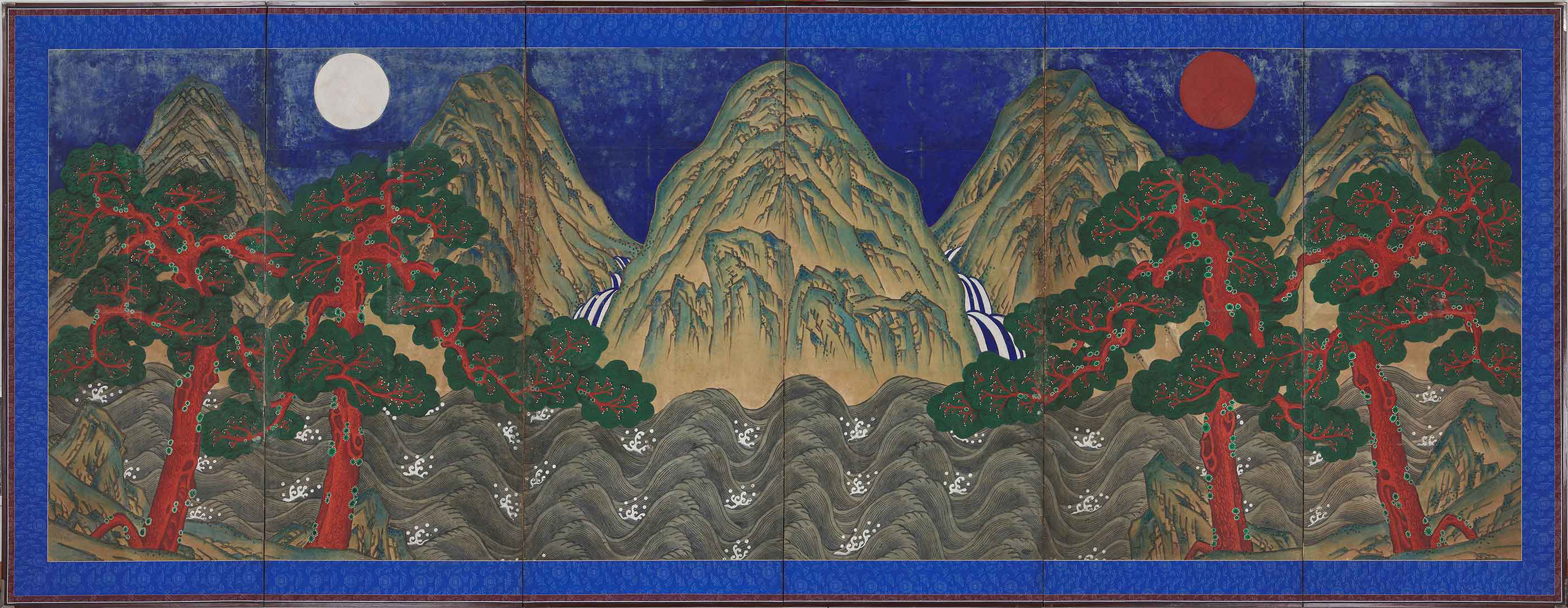
Sun, moon, and five peaks, 1800–1900. Korea, Joseon dynasty (1392–1910). Folding screen; ink and colour on paper.
A common symbol of royal authority was the combination of a sun, moon and five peaks in paintings; these elements in this screen represent the universe, with the king symbolically at the centre.
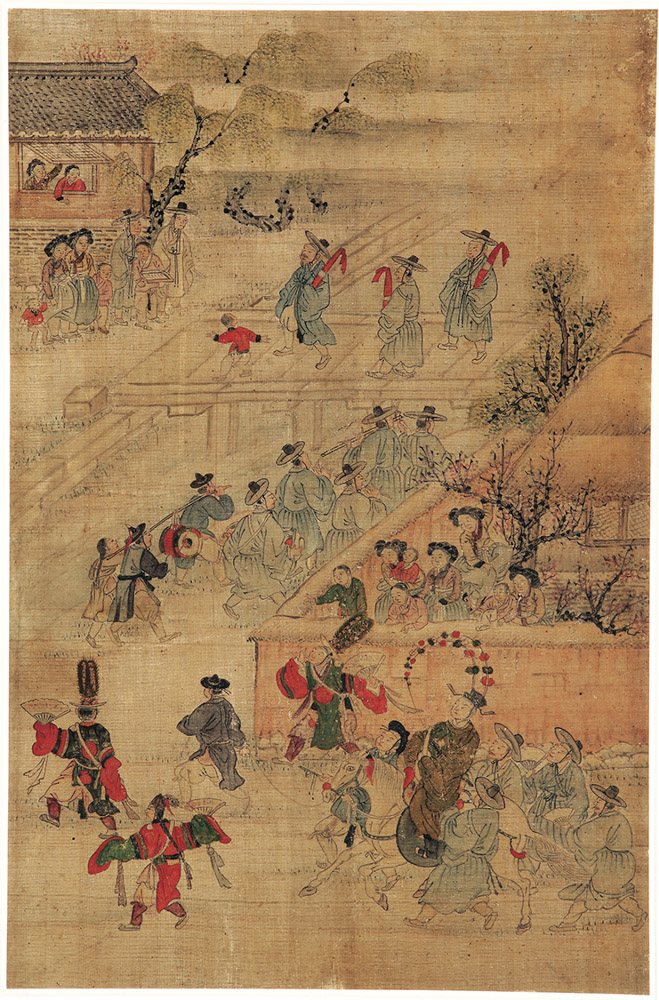
Highlights of an illustrious lifetime: Passing of the state examination, by attrib. to Kim Hongdo (Korean, 1745–approx. 1806). Korea, Joseon dynasty (1392–1910). Ink and colours on silk.
The Joseon dynasty’s royal culture became an influential model for the elite (yangban) class of the country. Several paintings portray celebrations of accomplishments in a yangban man’s life, such as passing state examinations or promotions in the government.

Celebrations for the birth of Crown Prince Yi Cheok (later Emperor Sunjong), 1874. Korea, Joseon dynasty (1392–1910). Ten-panel folding screen; ink and colours on silk.
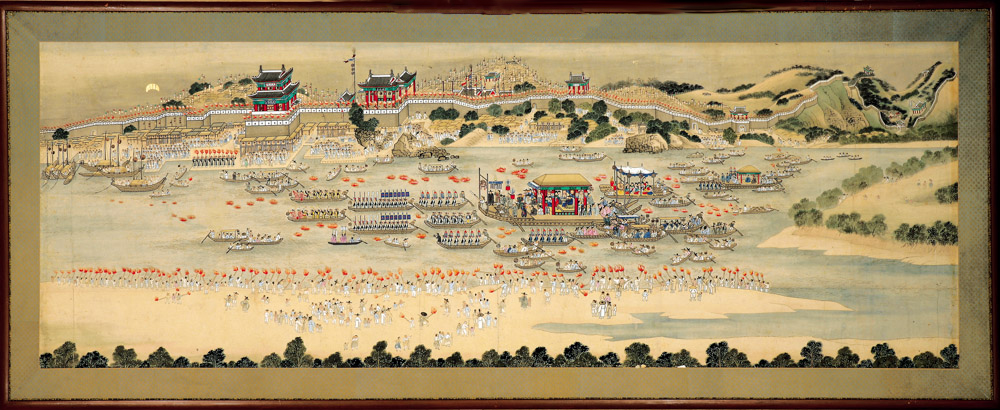
Welcoming ceremonies for the governor of Pyeong-an: Night boating on Daedong River, by attrib. to Kim Hongdo (Korean, 1745–approx. 1806). Korea, Joseon dynasty (1392–1910). Ink and colours on paper.
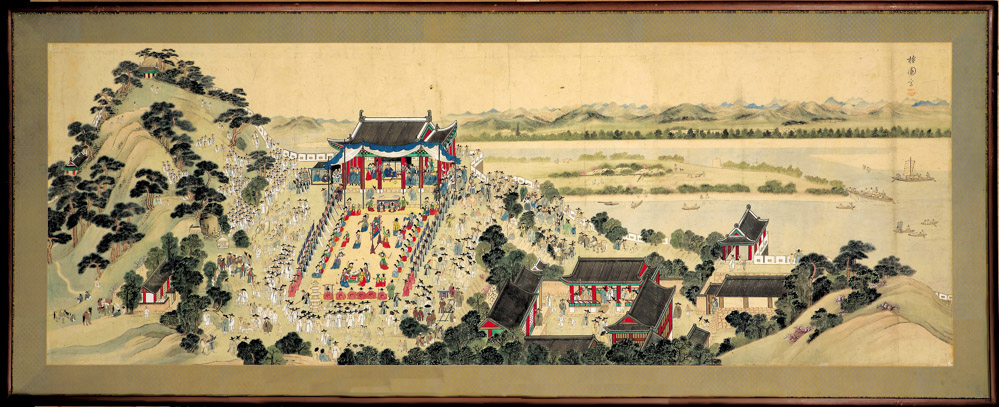
Welcoming ceremonies for the governor of Pyeong-an: Celebration at Yeon-gwang Pavilion, by (attrib.) Kim Hongdo (Korean, 1745–approx. 1806). Korea, Joseon dynasty (1392–1910). Ink and colours on paper.
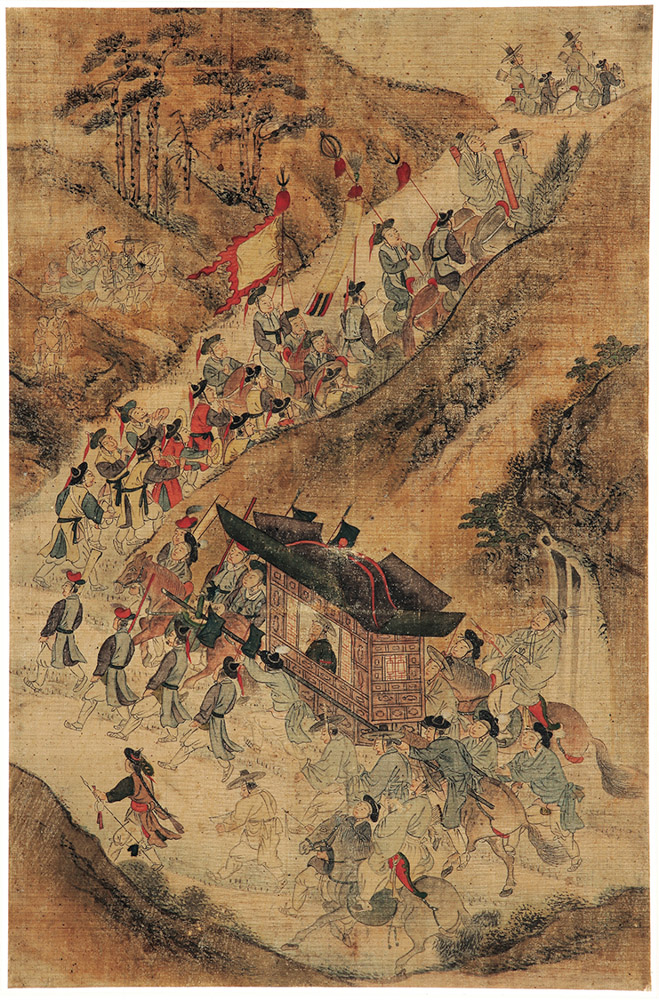
Highlights of an illustrious lifetime: Procession to new governmental post, by attrib. to Kim Hongdo (Korean, 1745–approx. 1806). Korea, Joseon dynasty (1392–1910). Ink and colours on silk.
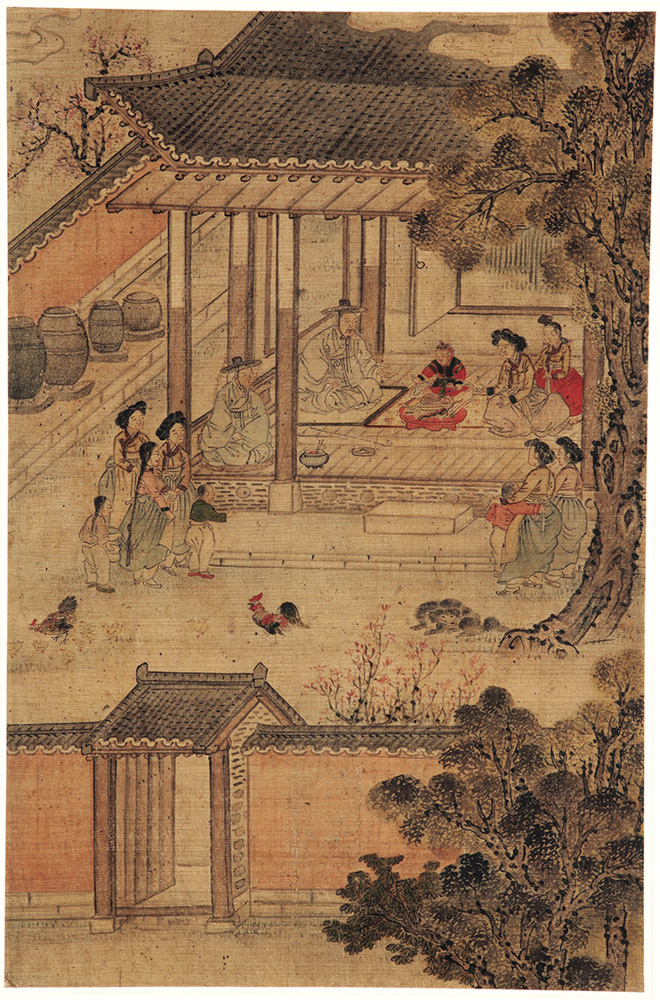
Highlights of an illustrious lifetime: First birthday celebration, by attrib. to Kim Hongdo (Korean, 1745–approx. 1806). Korea, Joseon dynasty (1392–1910). Ink and colours on silk.


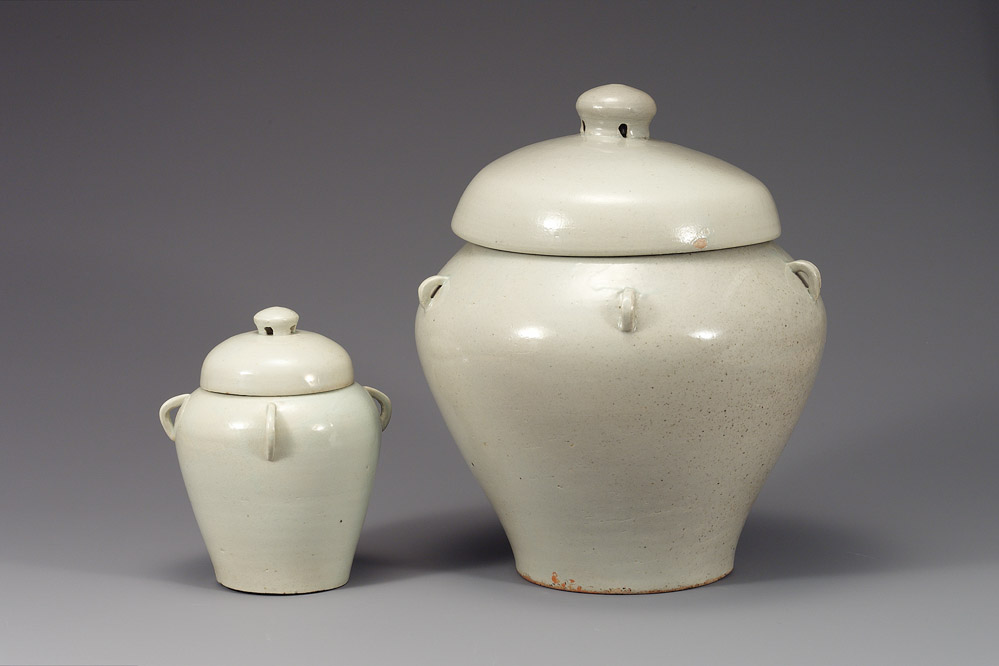
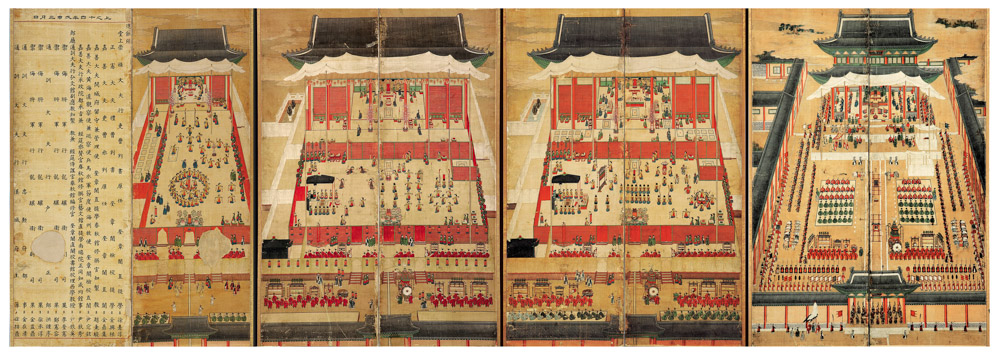

























Comments [0] Sign in to comment